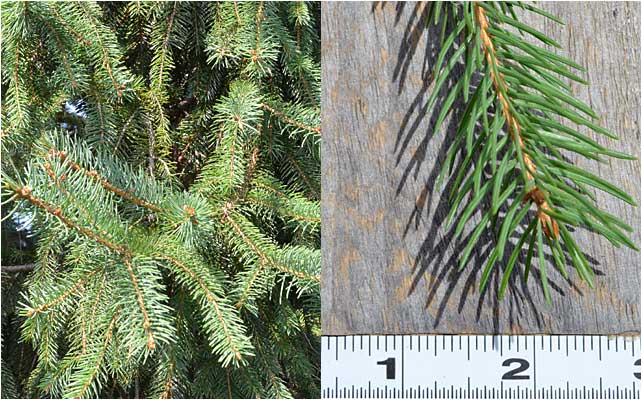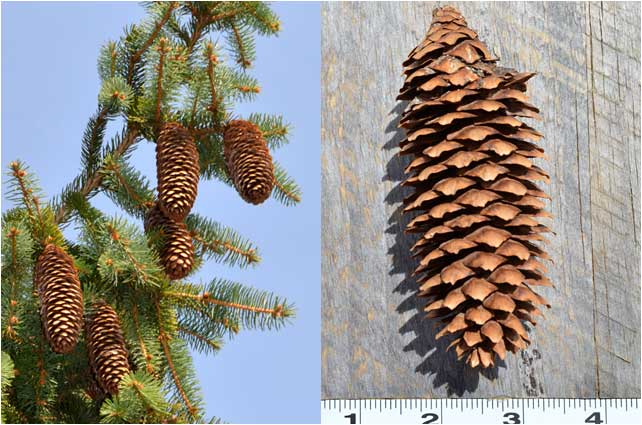25. NORWAY SPRUCE, Picea abies

The Norway Spruce is a tall conifer native to northern Europe but imported widely and planted in the U.S. since 1860. It is a hardy conifer and appears largely the same in all four seasons. There are variations in cone production and stages during the year, but overall the look does not change much. This Spruce is a monecious conifer meaning it bears both male and female cones on the same tree.
NEEDLES, CLOSE-UP

Spruce needles are quite firm, very pointed to the touch, and have four sides to them - so you can feel it in your fingers when you touch a Spruce needle or roll it between your fingers. The needles of fir trees are much flatter and softer.
MALE POLLINATOR CONES

The male cones are located at the tips of the branches of Norway Spruce, and are tiny for most of the year. In Spring, however, they expand and get to work putting out pollen.
SPRING, EMERGING FEMALE CONES

Sometimes when you pass a Norway Spruce in Spring it appears like it has holiday lights on it... These are emerging female cones, and in some years can be quite significant in number. Very attractive color of red.
SUMMER, MATURING FEMALE CONES

After fertilization, the red cones will enlarge in late spring, and turn green during the summer. They also reach good size, mature ones are 4 - 7 inches long, the longest cones of any species of Spruce seen in the U.S.
FALL, MATURE FEMALE CONES

While you may find mature cones on any part of a Norway Spruce, they are often clustered at the top. They take 1 full season to go from fertilization to maturity. They are also a common site in Winter as well.
4 SEASON BARK, BRANCHING

When you duck inside the canopy of this large tree, you will find an amazing trunk and branching structure. It is every child's dream of the perfect tree to climb. The branches are sturdy, whorled, and extend the length of the trunk. The bark has a reddish tinge to it, and is not particularly rough.